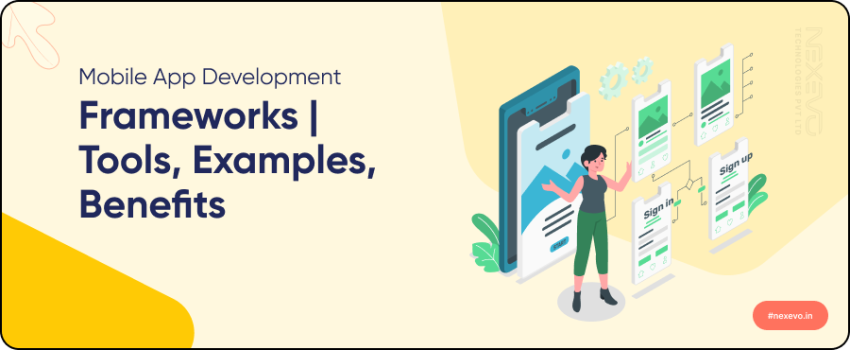Mobile App UX Design: How to Prioritize User Experience

Introduction:
In today's digital age, mobile applications have become an integral part of our daily lives. Whether it's ordering food, shopping online, or connecting with friends, mobile apps offer convenience and accessibility like never before. However, behind every successful mobile app lies a well-thought-out mobile UX design. In this article, we will explore what UX design is, its importance in mobile app development, and how it influences the overall success of an app.
User experience design, commonly known as UX design, is a multidisciplinary approach that focuses on creating meaningful and satisfying interactions between users and digital products or services. It involves understanding the users' needs, preferences, and goals to design intuitive and enjoyable experiences. When it comes to mobile app development, UX design plays a crucial role in shaping the usability, functionality, and overall appeal of the application.
Tips for Making User Experience Your Top Priority in Mobile App Development
To help you make mobile UX design your top priority in Mobile App Development, here are some tips and techniques to consider during the development process, including usability testing software, heuristic analysis for mobile apps, and an effective user feedback process.
1. Utilize Usability Testing Software:
Usability testing plays a crucial role in understanding how users interact with your mobile app. By employing usability testing software, you can gather valuable insights and feedback on the app's functionality, navigation, and overall user experience. Tools like UserTesting, UsabilityHub, or Lookback allow you to conduct remote or in-person tests, observe user behavior, and capture user reactions. These insights can guide design decisions, identify pain points, and refine the user interface to optimize the mobile UX design and usability.
2. Apply Heuristic Analysis for Mobile Apps:
Heuristic analysis is a method of evaluating the usability and user experience of an app based on a set of predefined principles or heuristics. While originally developed for desktop applications, heuristic analysis can be adapted for mobile app development. By employing established usability heuristics, such as Nielsen's 10 heuristics, you can assess the app's interface, interactions, and overall user experience. Conducting a heuristic analysis helps identify potential issues, improve the app's usability, and ensure consistency and clarity in design.
3. Establish an Effective User Feedback Process:
Gathering user feedback is essential for understanding user preferences, identifying areas of improvement, and making informed design decisions. Implementing an effective user feedback process enables you to capture user insights throughout the app's lifecycle. Incorporate feedback mechanisms within the app, such as in-app surveys, ratings, or feedback forms. Additionally, consider leveraging external channels like app store reviews, social media, or dedicated user feedback platforms like UserVoice or Apptentive. Actively listen to user feedback, address their concerns, and use it to prioritize and implement enhancements in subsequent updates.
4. Conduct User Research and Testing Iteratively:
User research should be an ongoing process throughout mobile app development. Begin by understanding your target audience, their needs, and behaviors. Create user personas and user scenarios to guide the design process. Prototype the app and conduct iterative usability testing to gather feedback at various stages. By involving users early and often, you can identify pain points, validate design decisions, and ensure the app meets users' expectations. Continuously iterate and refine the app based on user insights to achieve a mobile UX design that is user-centered.
5. Emphasize Performance and Responsiveness:
In addition to usability and interface design, performance and responsiveness are critical factors in delivering an exceptional user experience. Mobile app users expect fast loading times, smooth transitions, and minimal lag. Optimize the app's performance by reducing unnecessary animations, optimizing code, and conducting performance testing on different devices and network conditions. A snappy and responsive app enhances user satisfaction and encourages prolonged usage.
By incorporating these expert tips into your mobile app development process, you can prioritize user experience and create apps that resonate with your target audience. Utilize usability testing software, apply heuristic analysis, establish a robust user feedback process, conduct user research iteratively, and emphasize performance and responsiveness. Remember, a user-centric approach not only enhances user satisfaction but also contributes to the long-term success of your mobile app in a competitive market.
What are the Benefits of Implementing UX Principles in Your Mobile App?
Implementing UX principles in your mobile app development process can yield numerous benefits that positively impact both users and your business. By focusing on user experience, you can enhance customer satisfaction, optimize workflow, and create better flow experiences and navigation. Let's explore these benefits in more detail.
Improved Customer Satisfaction:
User experience is directly linked to customer satisfaction. When users find an app intuitive, easy to navigate, and visually appealing, they are more likely to enjoy using it. By implementing UX principles, you can create a positive emotional connection with users, leading to increased satisfaction and loyalty. A well-designed app that meets users' needs and exceeds their expectations enhances the overall experience and leaves a lasting impression, increasing the likelihood of repeat usage and positive reviews.
Optimized Workflow:
UX principles enable you to streamline the workflow within your mobile app. Through thoughtful design and user-centered approaches, you can simplify complex tasks and optimize the user journey. By reducing cognitive load and eliminating unnecessary steps or interactions, you create a more efficient and seamless experience for users. This, in turn, enhances productivity and encourages users to engage with your app more frequently, resulting in increased user retention and improved overall app performance.
Better Flow Experiences and Navigation:
Flow experiences occur when users are fully immersed and engaged in an activity, losing track of time and experiencing a sense of effortless concentration. By implementing UX principles, you can create better flow experiences within your mobile app. Well-designed interfaces, intuitive interactions, and clear navigation paths contribute to a smooth and uninterrupted user experience. By reducing friction and providing a cohesive and logical flow, users can easily accomplish their tasks, leading to a more enjoyable and satisfying app experience.
Increased User Engagement:
A mobile app that prioritizes user experience is more likely to captivate and engage its users. By implementing UX principles, you can create an app that grabs users' attention and keeps them coming back. Thoughtful use of visuals, animations, and micro-interactions can enhance the overall appeal and create a delightful experience. Engaging users through personalized interactions, notifications, and rewards fosters a sense of connection and encourages continued usage, ultimately driving higher user engagement and increased app success.
Competitive Advantage:
In today's saturated mobile app market, standing out from the competition is crucial. A well-designed app that prioritizes user experience gives you a significant competitive advantage. When users have multiple options, they are more likely to choose an app that offers a seamless and enjoyable experience. By consistently delivering exceptional user experiences, you can differentiate yourself from competitors, attract new users, and retain existing ones. Positive word-of-mouth, recommendations, and favorable reviews can further enhance your app's reputation and market position.
Conclusion: Implementing UX principles in your mobile app development process brings a range of benefits. By focusing on user experience, you can improve customer satisfaction, optimize workflow, and create better flow experiences and navigation. This leads to increased user engagement, a competitive advantage, and a positive impact on your business. Prioritizing mobile UX design principles ensures that your mobile app stands out in the market, resonates with users, and contributes to long-term success. Partnering with Nexevo Mobile app development company in Bangalore can help you implement these principles effectively and achieve your app development goals.










